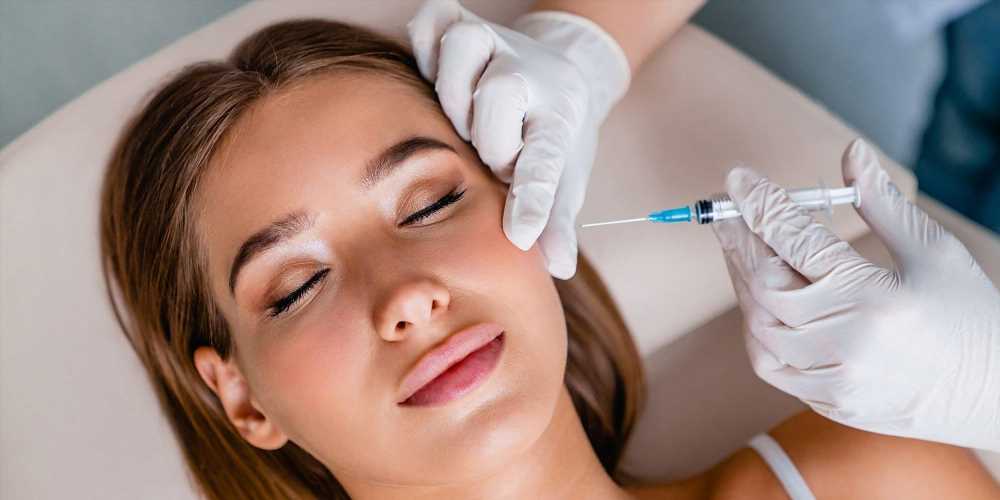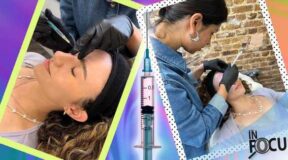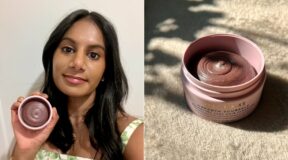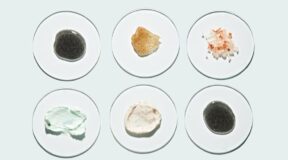Google "how to treat dark circles," and you're going to land on plenty of suggestions (probably an overwhelming amount, to be honest!), ranging from cool cucumbers to metal spoons to creams touted to cure all of your probs. But what about under-eye filler for dark circles?
Turns out, the cosmetic procedure may be just the thing that causes you to toss your full-coverage concealer for good. Here's everything you need to know about how injections help treat dark circles, straight from the pros.
RELATED: The 18 Best Eye Creams for Dark Circles, According to Thousands of Customer Reviews
How Do Injections for Dark Circles Work?
Dr. Ariel Ostad, a New York City-based cosmetic dermatologist, explains that, in the same way fillers are used to sculpt the face or enhance contours, under-eye injections are a way to add volume and diminish any shadowing that results from dark circles.
Injections in your under-eye area, also known as tear trough injections, can also smooth out "puffiness" or hollowing caused by under eye bags, according to Washington D.C.-based board certified plastic surgeon Dr. Troy Pittman.
What Types of Injections Are Used?
Ostad says every patient requires a consultation and customized approach that will help best determine the injection that will best fit their needs. That being said, the main fillers used for dark circles are hyaluronic acid injectables like, Restylane, Restylane Refyne, and Belotero.
"They are fine fillers that avoid a pillow puffy effect or lumps and bumps," Dr. Ostad says."For patients with deep hollowing, we typically use Voluma or Restylane Lyft, which contain hyaluronic acid that gives a great natural look, while truly holding and lifting the skin."
Are Dark Circles Really a Sign You’re Tired?
It's not as simple as pegging dark circles to exhaustion, Dr. Ostad says. "Some people experience dark circles due to hollowing under the eye, which naturally occurs as we age and our skin loses collagen and fat," he says. "In these cases, they could be seeing dark circles under their eyes all the time, no matter how many hours of sleep they get."
Other reasons for dark circles? Allergies, pigmentation issues, and even dehydration. Dr. Pittman adds that, like most things in life, genetics can also play a part as well. In many cases, the dark part of the under-eye circle is a "result of blood vessels that are close to the skin," he says. In this scenario, he says filler isn't always the solution. Consulting with a doctor will help find the treatment plan best suited for you.
VIDEO: The 10 Best Eye Serums for Dark Circles, Wrinkles, Puffiness, and More
What Happens During the Appointment?
Once you've chatted with a doctor about your concerns and goals and the two of you have determined a course of treatment, it's time to give the injections a shot (literally).
Dr. Ostad says he uses microcannulas — thin, needle-like blunt-tip instruments — to insert fillers. These tools are useful for the delicate under-eye area, he says, because they don't puncture blood vessels and help avoid bruising. It also diminishes the likelihood of certain risks, like vascular occlusion (blockage of a blood vessel), which is a serious complication that can occur when fillers are improperly injected.
"Microcannulas also allow me to really manipulate under the skin," Dr. Ostad explains. "I don't only inject the actual under-eye area, but the upper cheek area as well for a more natural look."
In addition to preventing bruises, Dr. Pittman says that blunt-tip cannulas are a much less painful delivery method for the patient because "our bodies can only sense sharp needles under the skin."
RELATED: Everything You Need to Know About Getting Facial Fillers
Are There Any Side Effects?
It will probably come as no surprise to you that your under-eye area is rather delicate. So, from the get-go, it's important to know that you might experience some light pain during the procedure. However, Dr. Ostad says they do use a numbing cream to alleviate discomfort. After your appointment, you may experience slight bruising, swelling, or redness for up to a week.
"Patients can prevent bruising by refraining from working out for a few days, icing the under eye area, and sleeping on their back," Dr. Ostad says. Dr. Pittman adds that avoiding salty foods can also prevent excess swelling.
But according to Dr. Pittman, if the filler isn't placed correctly or is too close to the surface, blood vessels beneath the skin can become visible creating a "blue tint" under the eye, which is called the Tyndall effect.
What Is the Maintenance Like?
According to Dr. Pittman, hyaluronic acid fillers typically last about six to eight months, though he says that once patients get used to the effect, they may want to modify their treatments, depending on their preference.
Dr. Ostad adds that upkeep varies from person to person, and is also contingent on the filler that was used. "As fillers are eventually absorbed by your skin, a person's metabolism system will play a role in how quickly they dissolve."
Final Word
If you're interested in fillers for dark circles or other cosmetic concerns, Dr. Ostad says it's important to seek out a reputable board-certified doctor to avoid infections and achieve your desired results.
"You never want to skimp on the price of a treatment, especially when it comes to the delicate eye region," he says.
Source: Read Full Article





